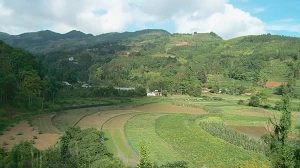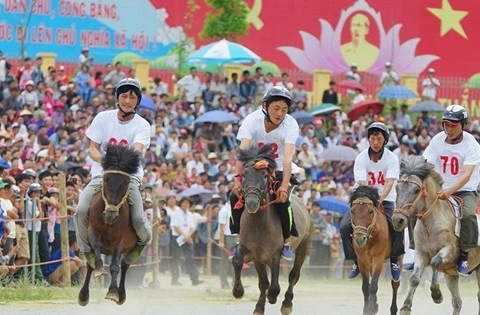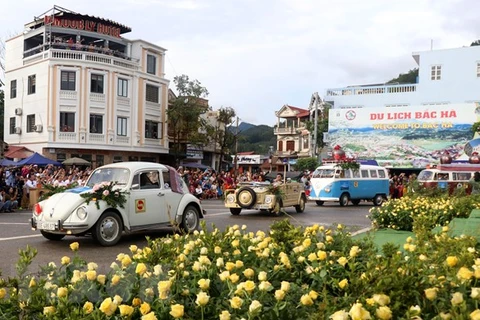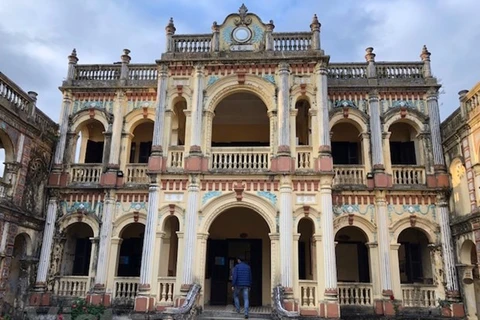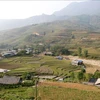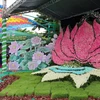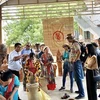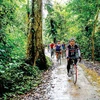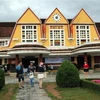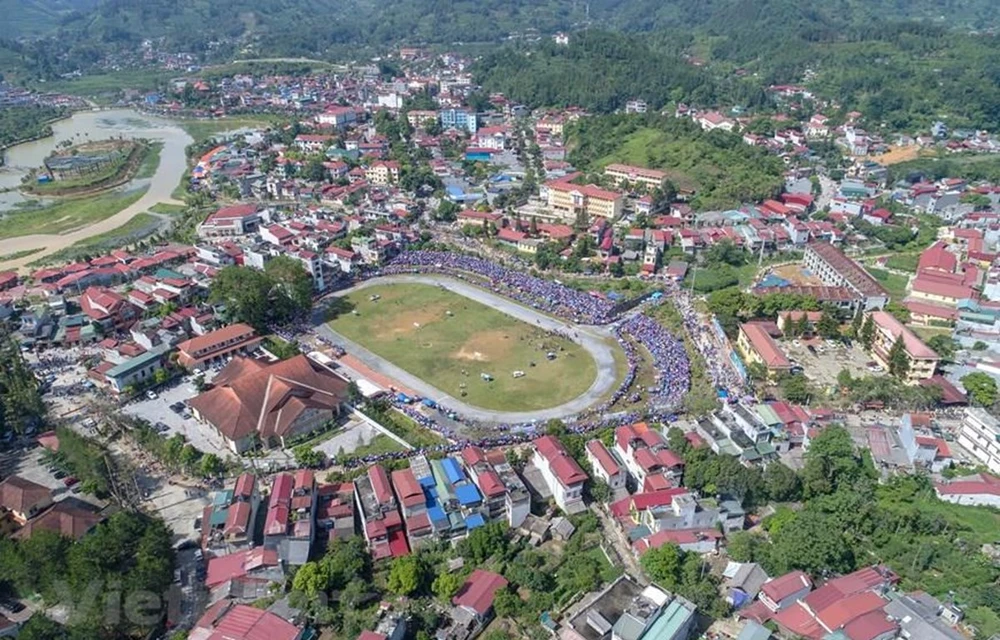
Hanoi (VNA) - Music, horse racing and food are all to be featured at the Bac Ha Winter Festival from November 20-22 as the northern mountainous province of Lao Cai attempts to attract tourists back to the district.
"We will be holding horse races in Na Hoi commune at the stadium in Bac Ha district," said Hoang Van Khoa, Vice Chairman of the district's People's Committee.
Na Hoi is home to the famous stables that bred the winner of the annual Bac Ha Horse Racing Festival held in May this year.
In addition to the race, a food festival will take place with cooks vying for the best "Bac Ha Food Tray", a chance to highlight local delicacies from the mountainous district.
The event will also include the ethnic Mong Panpipe Festival for the first time.
Bac Ha is home to 14 ethnic groups. The Mong ethnic minority group accounts for 47 percent of the 62,000 people who live in the district, and they mainly live on the mountainsides making a living from growing maize and rice on the rocky cliff ledges.
During the period under the French domination, Lord Hoang A Tuong of the Mong group in Bac Ha, built a French-style mansion in the town. Today, it is a tourist attraction.
Other activities will include a street parade, night market, flower valley and homestay tours.
The festival is part of the Bac Ha People's Committee's efforts to attract visitors to the district after the COVID-19 pandemic, which cut off all international visitors earlier this year.
Bac Ha – a wonderful place to discover
Despite being surrounded by countryside just as lush and interesting as Sapa, Bac Ha has somehow flown under the radar as a trekking base. The town has more to discover.
Endowed with majestic mountains, rivers and caves, coupled with unique culture, Bac Ha is truly an ideal destination for trekkers and culture lovers. This town is well-known for its Sunday morning ethnic market where visitors have the chance to see the Northwestern ethnics in colourful costumes trading local products and souvenirs such as jewelry, scarves, and wood carvings.
Besides the Bac Ha Market, Fairy Cave, Hoang A Tuong Palace, Ban Pho Village and Bac Ha Temple are worth checking out.
Bac Ha was referred to as a ‘White Alley’ (Cao nguyen trang) between 1985 and 1996, when poppy plants and marijuana were grown in some mountainous area such as Lang Son, Lao Cai, Yen Bai, Lai Chau, and Nghe An. As the Vietnamese government prohibited growing these substances, the ‘White Alley’ turns into a peaceful land of plum blossoms over the hills every spring, which creates romantic scenery for this destination.
Plums in Bac Ha, called Tam Hoa plums, are different from those in other regions. Bac Ha's plums are greenish-red, while those of Lang Son District are pink.
Out of all of Vietnam's different plums, most say Bac Ha's are the tastiest because they're so sweet and have small pits. The region is called the White Plateau because it's home to more than 1,000ha of plum trees. It's the northwest region's biggest plum-growing area.
Horse racing is a unique part of life on Bac Ha Plateau. Visitors have the chance to enjoy the thrilling race, which was based on stories handed down over centuries, when immense forests were adorned with white plum and apricot flowers and local people flocked to the edifice of the King of the local Mong ethnic group, who was known as Hoang A Tuong, to see the horse race.
During the competition, which used to take place at the foot of Ba Me Con Mount, the horsemen in well-fitting dress were ready to gallop when a shot signaled the start of the race. Approaching the finishing line, they jumped from their horses, fired five shots in succession, took a red ball, remounted, and carried on. The winner was the man with the fastest horse and the most points.
Other destinations that are worth visiting are Hoang A Tuong Place, fairy cave, fairy mountain, Bac Ha temple and Ban Pho village.
Coming to Bac Ha, visitors cannot miss tasting the local cuisine, corn wine, salted pork, and seven-colour-steamed glutinous rice./.

